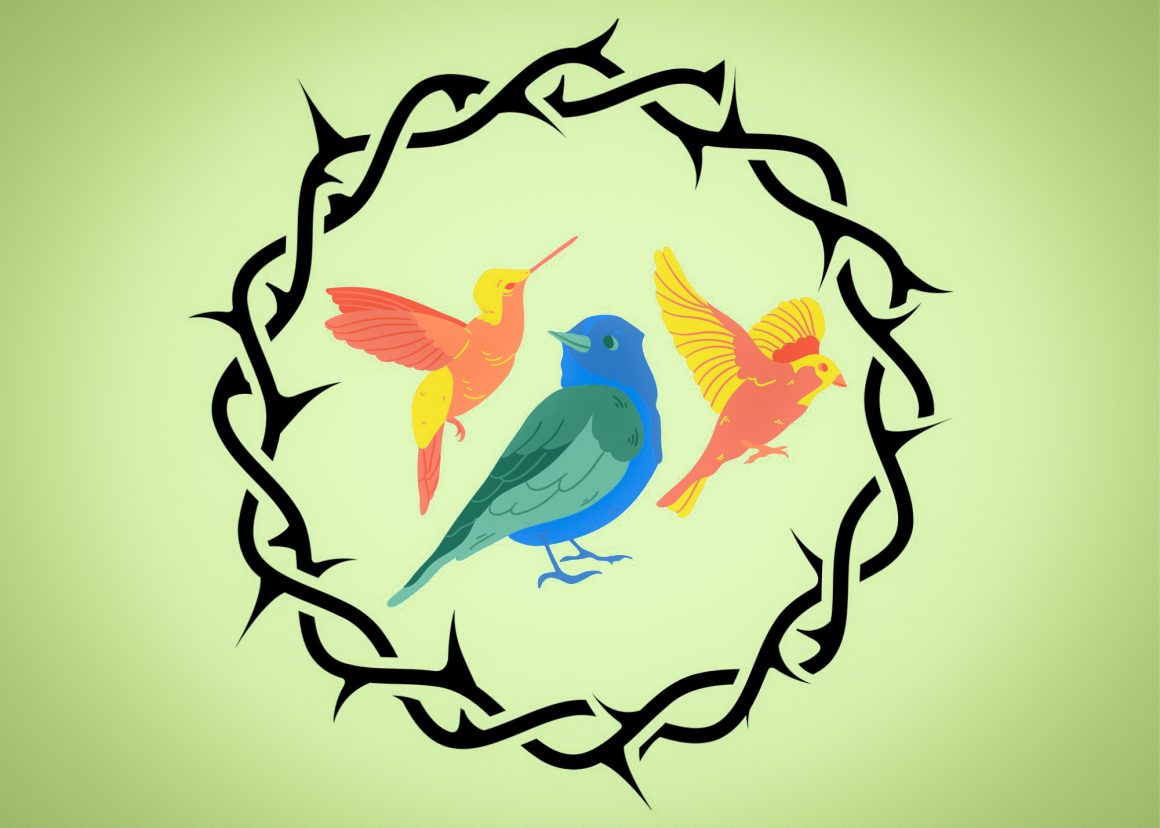
Urban birds rebel against hostile architecture
By Leonie O’Sullivan, August 7 2023—
Have you ever looked up at a statue or monument and thought — Gosh, I wish there were fewer birds around? Me neither. Sadly, city officials around the world think differently and view urban birds as nuisances instead of cohabitants. Sure, our feathered friends can cause us some problems, but we should cut them some slack — humankind’s effect on birds is drastically worse.
In 1949, the first patent for “birdproofing” spikes was approved. Since then, cities around the world have been implementing this hostile architecture. Anti-bird spikes are strips of sharp, metal pins installed on the outsides of buildings to deter birds. These spikes are unethical and are known to not only harm but kill urban wildlife. A recent study suggests that the birds have had enough and have started rebelling. This research found that European crows and magpies have taken one look at these spikes and thought — You’re coming home with me.
A part of me hoped that the birds were acting out of pettiness or spitefulness, but it turns out they’re just being clever. The researchers from the Netherlands found that birds have been using these spikes as nest-building materials. It doesn’t seem like these nests would be very comfortable, but the spikes are functional for birds. The spikes act as a foundation to help hold the nest material together and also as a security system to keep out other unwanted birds that may prey on their eggs and chicks. Peregrine falcons have been observed using the spikes for another function — food storage. They have been spotted skewering their kills with these spikes to save them for later.
Some birds are more rebellious than others. Auke-Florian (the first author of this study) posted on Twitter about the beloved Australian ‘Parkdale Pigeon’ who was evicted several times from her home, which she was building right on top of the spikes in Parkdale railway station in Victoria. They kept adding more spikes, which only provided her with a better foundation. In adversity, she became quite the local celebrity and won the territory war and even mothered chicks in the nest. Cockatoos are exceptionally defiant. Multiple videos online show this avian species ripping anti-bird spikes off window sills and roofs, clearing areas much more extensive than needed for nesting.
It is not atypical for birds to use unconventional construction materials for their nests. They have been observed using screws, knitting needles and even barbed wire. On Twitter, Deputy Chief Michelle Davey of the Delta Police Department in British Columbia shared a photo of a nest constructed from drug users’ syringes, highlighting the sad reality of the opioid epidemic. Traditionally, birds use thorny twigs to protect their home from invaders, and this use of atypical materials seems to be a revolutionary approach for their security.
The repurposing of unconventional materials and anti-bird spikes is not the first time that avian intelligence has prevailed. Birds are known to resort to chemical warfare to protect their nests too. They bring fresh plants into their nests which release volatile compounds for repelling parasites, and they also bring cigarette butts home for the nicotine which acts as an arthropod repellent.
Birds have made quite the laughingstock out of the humans implementing this hostile architecture. Instead of deterring birds, the anti-bird spikes seem more pro-bird. From security to food storage, birds have repurposed these spikes for their own good. Although they are not an ethical or harmless form of bird control, the birds have triumphed to get the most out of a bad situation.
